
LGBTQ+ Flags and their Meaning
The LGBTQ+ community has a rich history of using flags as symbols of pride, identity, and solidarity.
These colorful banners represent the diverse spectrum of sexual orientations, gender identities, and expressions within the LGBTQ+ community.
In this article, we will explore the meaning and symbolism behind some of the most popular LGBTQ+ flags, including the Pride Flag, Transgender Pride Flag, Bisexual Pride Flag, Pansexual Pride Flag, Lesbian Pride Flag, Non-Binary Pride Flag, Asexual Pride Flag, Genderqueer Pride Flag, Intersex Pride Flag, and the Progress Pride Flag.
Introduction
The LGBTQ+ community has long used flags as a powerful visual representation of their identities and experiences.
These flags serve as symbols of inclusivity, diversity, and equality, and are often displayed during Pride Month celebrations, LGBTQ+ events, and protests.
LGBTQ+ flags are not just pieces of fabric, but they carry deep meanings and stories of resilience, struggle, and progress. Let’s delve into the fascinating history and symbolism behind some of the most prominent LGBTQ+ flags.
History of LGBTQ+ Flags
The use of flags as symbols for the LGBTQ+ community can be traced back to the 1970s, when gay activist Gilbert Baker designed the iconic Pride Flag.
The original Pride Flag featured eight vibrant colors, each representing different aspects of the LGBTQ+ community, including pink for sex, red for life, orange for healing, yellow for sunlight, green for nature, blue for art, indigo for serenity, and violet for spirit.
Over time, the Pride Flag has evolved and become the most widely recognized symbol of the LGBTQ+ community, with the six-stripe version (red, orange, yellow, green, blue, and violet) being the most commonly used today.
Popular LGBTQ+ Flags
In addition to the Pride Flag, there are several other LGBTQ+ flags that have gained recognition and are widely used to represent specific sexual orientations, gender identities, and expressions within the community.
Let’s explore some of these flags and their meanings.
Pride Flag
The Pride Flag, also known as the Rainbow Flag, is the most well-known and recognized LGBTQ+ flag. It is a symbol of diversity, inclusivity, and acceptance.
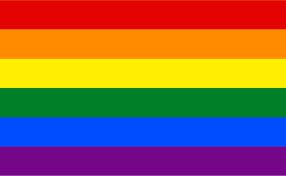
The six colors of the Pride Flag represent different aspects of the LGBTQ+ community, including red for life, orange for healing, yellow for sunlight, green for nature, blue for harmony, and violet for spirit.
The Pride Flag is often used during Pride Month celebrations and LGBTQ+ events to signify unity and solidarity within the community.
Transgender Pride Flag
The Transgender Pride Flag is a symbol of the transgender community and was designed by transgender woman Monica Helms in 1999. It features three horizontal stripes of light blue, pink, and light blue.
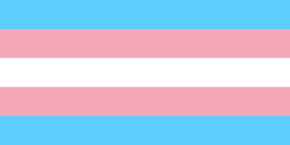
The light blue stripes represent the traditional color associated with baby boys, while the pink stripe represents the traditional color associated with baby girls.
The white stripe in the middle represents those who are transitioning or identifying as neither strictly male nor female. The Transgender Pride Flag is a powerful symbol of transgender rights, visibility, and inclusivity.
Bisexual Pride Flag
The Bisexual Pride Flag is designed with three horizontal stripes of pink, purple, and blue.
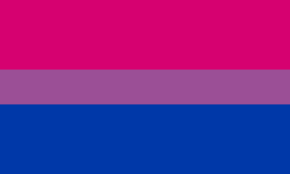
The pink stripe represents same-sex attraction, the blue stripe represents opposite-sex attraction, and the purple stripe represents the attraction to both same and opposite sexes.
The Bisexual Pride Flag is a symbol of bisexuality visibility and acceptance, and aims to break down misconceptions and biphobia often faced by bisexual individuals.
Pansexual Pride Flag
The Pansexual Pride Flag features three horizontal stripes of pink, yellow, and blue.
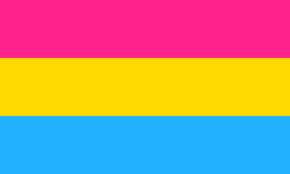
The pink stripe represents attraction to those who identify with the female gender, the blue stripe represents attraction to those who identify with the male gender, and the yellow stripe represents attraction to those who identify outside of the traditional male-female binary.
The Pansexual Pride Flag is a symbol of pansexuality visibility and recognition.
Lesbian Pride Flag
The Lesbian Pride Flag is designed with a series of overlapping shades of orange and pink stripes, with a white stripe in the middle.
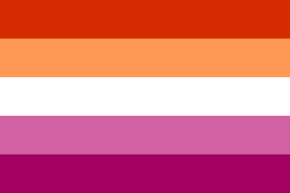
The different shades of orange and pink represent diversity within the lesbian community, while the white stripe represents inclusion of all genders.
The Lesbian Pride Flag is a symbol of lesbian visibility, empowerment, and unity.
Non-Binary Pride Flag
The Non-Binary Pride Flag is designed with four horizontal stripes of yellow, white, purple, and black.

The yellow stripe represents gender outside of the traditional male-female binary, the white stripe represents all genders, the purple stripe represents a mix of both masculinity and femininity, and the black stripe represents a lack of gender.
The Non-Binary Pride Flag is a symbol of non-binary visibility and recognition, and aims to challenge societal norms around gender identity.
Asexual Pride Flag
The Asexual Pride Flag is designed with four horizontal stripes of black, grey, white, and purple.
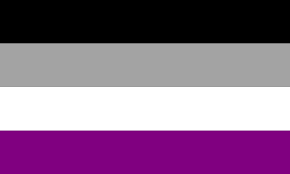
The black stripe represents asexuality as a sexual orientation, the grey stripe represents grey-asexuality and demisexuality, the white stripe represents sexuality, and the purple stripe represents community.
The Asexual Pride Flag is a symbol of asexual visibility, acceptance, and celebration of diverse sexual orientations.
Genderqueer Pride Flag
The Genderqueer Pride Flag is designed with stripes of lavender, white, and dark green.
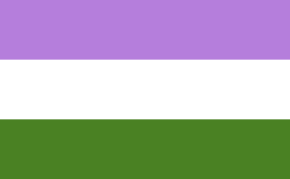
The lavender stripe represents androgyny and queerness, the white stripe represents agender identity, and the dark green stripe represents the connection to the earth.
The Genderqueer Pride Flag is a symbol of genderqueer visibility, acceptance, and embracing gender diversity.
Intersex Pride Flag
The Intersex Pride Flag is designed with a purple circle on a yellow background.
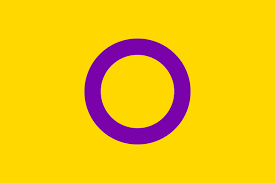
The purple circle represents the variation in sex characteristics, while the yellow background represents people of all genders.
The Intersex Pride Flag is a symbol of intersex visibility, recognition, and advocacy for the rights of intersex individuals.
Progress Pride Flag
The Progress Pride Flag is an inclusive version of the Pride Flag that includes additional stripes to represent marginalized LGBTQ+ communities.

It features the original six colors of the Pride Flag (red, orange, yellow, green, blue, and violet) along with additional stripes of black and brown to represent people of color within the LGBTQ+ community, and stripes of light blue, pink, and white to represent transgender individuals.
The Progress Pride Flag is a symbol of intersectionality, inclusivity, and solidarity among all LGBTQ+ communities.
Other LGBTQ+ Flags
In addition to the aforementioned flags, there are several other flags that represent specific identities within the LGBTQ+ community.
These flags aim to increase visibility, raise awareness, and promote acceptance for various sexual orientations, gender identities, and experiences. Some of these flags include:
Polyamorous Pride Flag
The Polyamorous Pride Flag is designed with three horizontal stripes of blue, red, and black.

The blue stripe represents openness and honesty among all partners, the red stripe represents love and passion, and the black stripe represents solidarity with those who must hide their polyamorous relationships.
The Polyamorous Pride Flag is a symbol of polyamorous visibility, acceptance, and advocacy for the rights of polyamorous individuals.
Agender Pride Flag
The Agender Pride Flag features three horizontal stripes of black, white, and green.

The black stripe represents the absence of gender, the white stripe represents neutrality, and the green stripe represents non-conforming gender identities.
The Agender Pride Flag is a symbol of agender visibility, recognition, and affirmation of gender diversity.
Demisexual Pride Flag
The Demisexual Pride Flag is designed with three horizontal stripes of black, white, and grey.
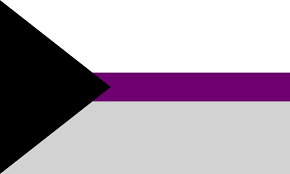
The black stripe represents asexuality, the white stripe represents sexuality, and the grey stripe represents the spectrum between asexuality and sexuality.
The Demisexual Pride Flag is a symbol of demisexual visibility, acceptance, and understanding of unique sexual orientations.
Two-Spirit Pride Flag
The Two-Spirit Pride Flag is a symbol of Native American and Indigenous LGBTQ+ individuals.
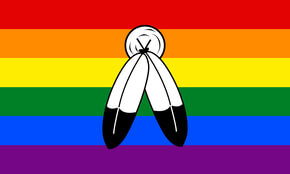
The flag features a circular design with four colors: yellow, representing the north and masculine energies; green, representing the east and femininity; blue, representing the south and transgender identities; and red, representing the west and two-spirit individuals.
The Two-Spirit Pride Flag is a symbol of cultural identity, resilience, and inclusivity for Indigenous LGBTQ+ communities.
Conclusion
The LGBTQ+ community is diverse and vibrant, with each individual and identity deserving recognition, acceptance, and equality.
LGBTQ+ flags play a crucial role in promoting visibility, awareness, and inclusivity for different sexual orientations, gender identities, and experiences.
These flags represent the resilience, pride, and advocacy of the LGBTQ+ community, and serve as symbols of hope, unity, and progress.
FAQs
What is the significance of LGBTQ+ flags?
LGBTQ+ flags are symbols of visibility, awareness, and inclusivity for different sexual orientations, gender identities, and experiences. They represent the resilience, pride, and advocacy of the LGBTQ+ community, and promote acceptance and equality.
How many LGBTQ+ flags are there?
There are numerous LGBTQ+ flags that represent various identities within the LGBTQ+ community, including but not limited to the Pride Flag, Transgender Pride Flag, Bisexual Pride Flag, Pansexual Pride Flag, Lesbian Pride Flag, Non-Binary Pride Flag, Asexual Pride Flag, and more.
Are LGBTQ+ flags recognized worldwide?
While LGBTQ+ flags are recognized and celebrated in many parts of the world, it’s important to note that acceptance and recognition may vary depending on cultural, social, and political factors. LGBTQ+ visibility and rights are still a work in progress in many regions, and continued advocacy and support are needed.
How can I support the LGBTQ+ community?
There are numerous ways to support the LGBTQ+ community, including educating oneself about LGBTQ+ issues, being an ally, using inclusive language, advocating for LGBTQ+ rights and equality, and supporting LGBTQ+ organizations and events. Showing acceptance, respect, and understanding towards LGBTQ+ individuals can make a positive impact in creating a more inclusive and accepting society.
No Comments